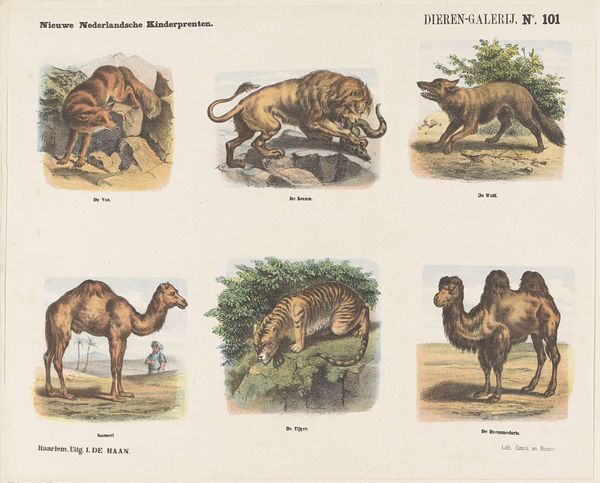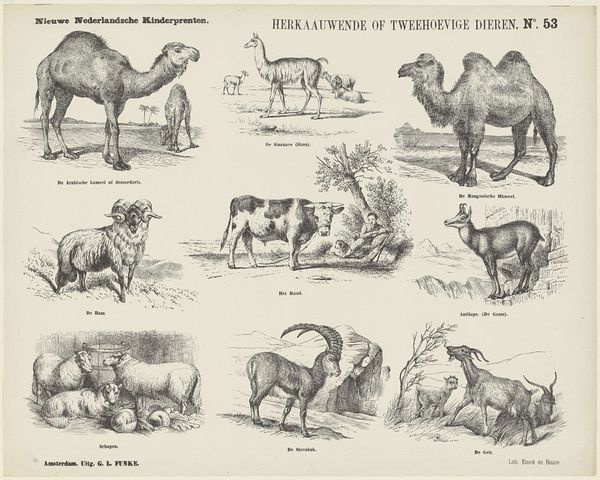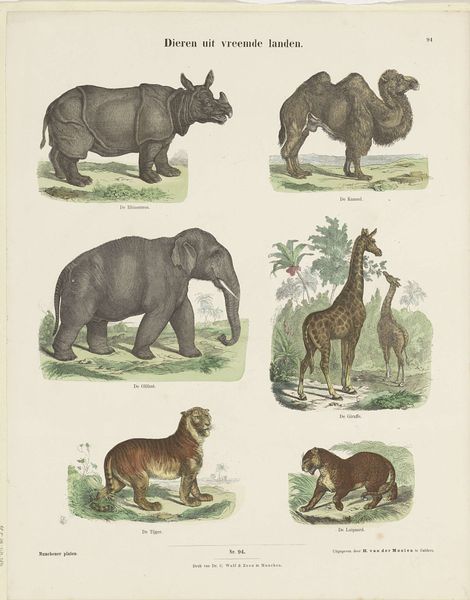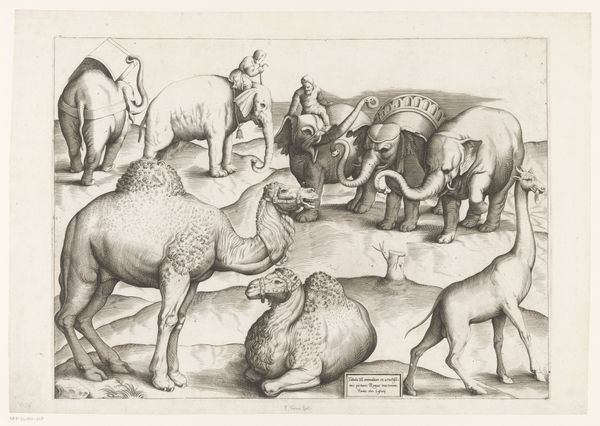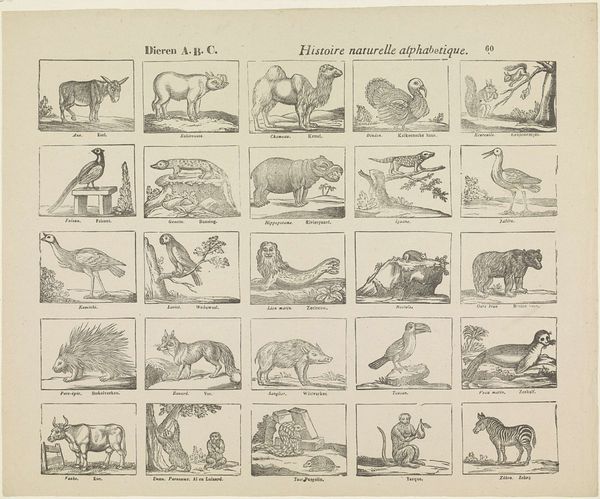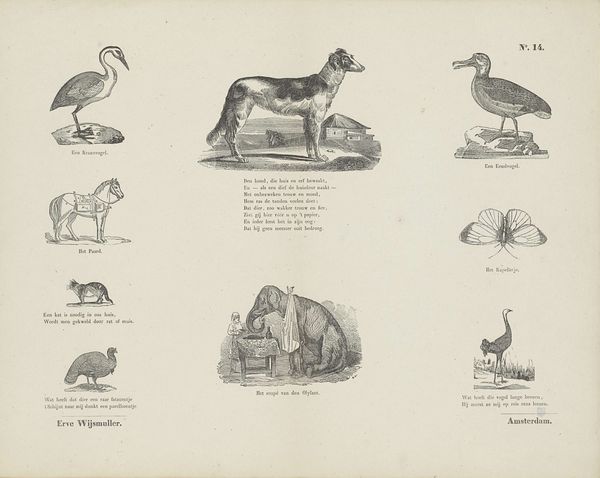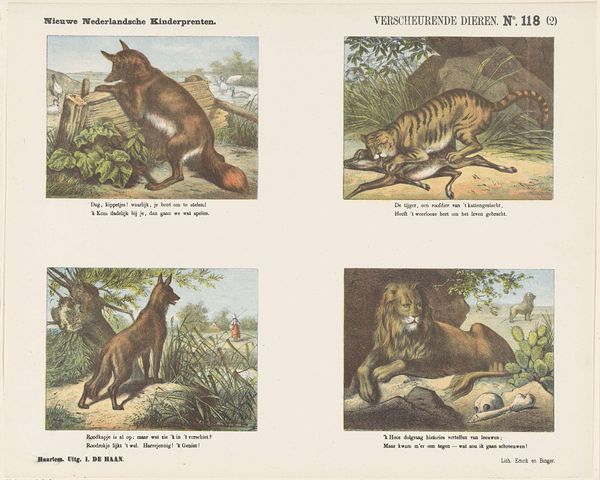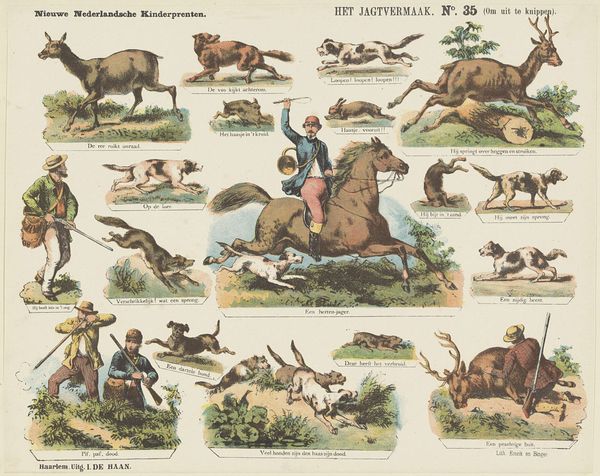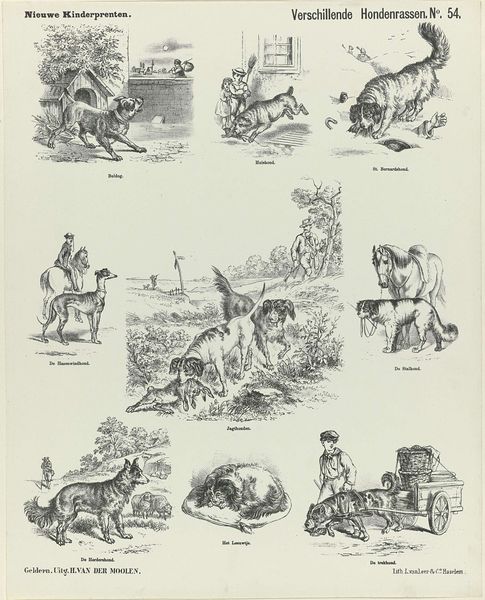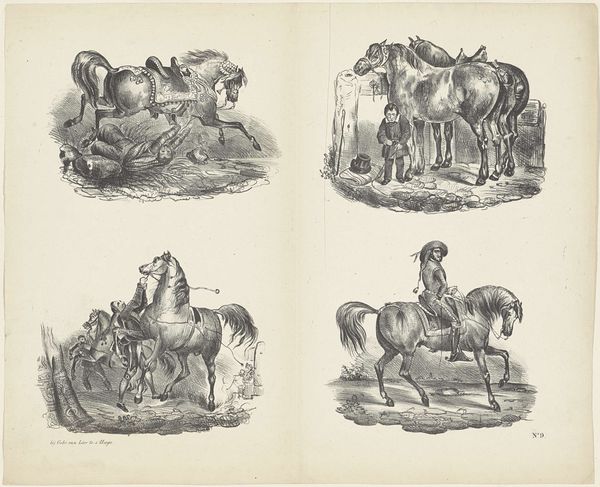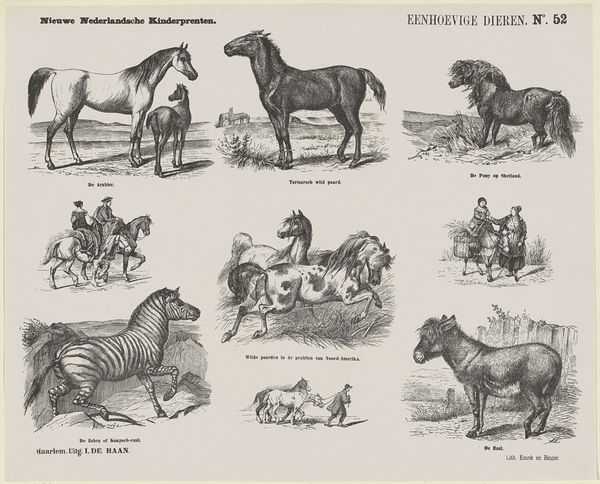
drawing, print, etching
#
drawing
#
animal
# print
#
etching
#
genre-painting
#
realism
Dimensions: height 335 mm, width 423 mm
Copyright: Rijks Museum: Open Domain
Curator: This print, titled "Dieren-galerij" or "Animal Gallery", dates from between 1865 and 1875, attributed to George Lodewijk Funke. It's an etching, displaying several animals, almost like a comparative study. What catches your eye first? Editor: There's something about the rather somber tone, even with the title suggesting it's for children. These aren't whimsical renderings; there’s a weightiness to their depiction, a sense of the animal as a symbol almost disconnected from the natural world. Curator: Absolutely. Note the process – it is an etching meant for mass production as printed material. The etcher, likely Funke, had to transfer an image onto a metal plate, suggesting this piece might be about making nature reproducible and understandable, almost taxonomically. It seems quite didactic to produce a series of specimens like this. Editor: I find the starkness fascinating. Take the lion; it's rendered powerfully, but there's a sadness in its eyes, as though it's embodying a king dethroned, an emblem of lost power or of a symbol displaced. Is this meant to impress, or warn? And positioned near a snarling wolf... Curator: Considering it says "Kinderprenten," these animals likely serve as visual lessons or parables, potentially tied to morality tales. Etchings at this time, readily available and relatively inexpensive, provided a valuable resource to visually educate. Consider that labor of printmaking being circulated amongst children; it’s intended to inform a new generation of how one taxonomizes the world. Editor: So the choices in rendering, like the almost mournful quality in the lion's expression, serves less as naturalism and more to impart broader themes like power, or wildness. The tiger seems similarly burdened by thought. Curator: I'd agree. Looking at it through the lens of material history helps unpack the intention behind mass producing these animal representations – beyond pure aesthetic or entertainment value. The goal was probably didactic. Editor: It is rather compelling to interpret images divorced from an expectation of accuracy or photographic realism. Seeing these creatures imbued with such emotion, what do these emblems mean? Curator: I find looking at it materially to be very informative and really illuminates the processes in the image's creation. Editor: A nice reminder that the animal kingdom, even represented here in monochrome print, contains a world of potent meaning, that even through a child’s lens, this kind of print invites us to contemplate ourselves and our world symbolically.
Comments
No comments
Be the first to comment and join the conversation on the ultimate creative platform.
